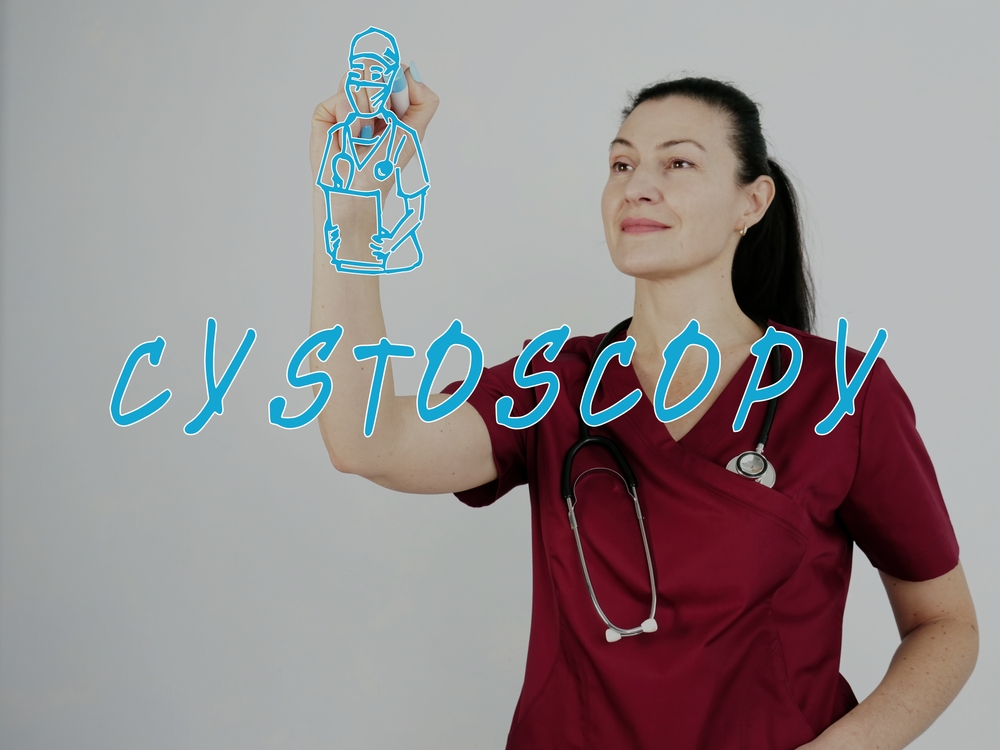Mark Kopec Now
Cystoscopy
🏥 Cystoscopy and Medical Malpractice: An Overview
A cystoscopy is a common diagnostic and therapeutic procedure used to examine the lining of the bladder and the urethra. It can lead to complications and potential medical malpractice claims. This article explores the cystoscopy procedure, and its role in urology. It also discusses the context in which cystoscopy can relate to medical malpractice, and the harm that can result.
📜 History of Cystoscopy
The concept of directly visualizing internal body cavities dates back centuries. However, the development of a practical instrument for examining the bladder evolved primarily in the 19th and 20th centuries. Early attempts at endoscopy involved rigid, often cumbersome tubes and rudimentary lighting.
- Early Innovations: The first truly usable cystoscope is often attributed to German urologist Max Nitze in 1879. His design incorporated an incandescent lamp for illumination, which was a significant breakthrough over previous reflective systems.
- Refinement: The cystoscope has undergone continuous technological refinement. This includes the incorporation of modern fiber optics and digital imaging. These lead to the highly sophisticated, flexible, and rigid instruments used today. This evolution has made the procedure safer, less painful, and capable of providing much clearer images.

🔎 The Cystoscopy Procedure and Its Indications
What is a Cystoscopy?
A cystoscopy involves inserting a thin tube with a light and a camera (cystoscope) through the urethra and into the bladder. This allows a medical professional to visually inspect the urinary tract lining for abnormalities.
Medical Conditions that Warrant a Cystoscopy
Cystoscopy is primarily used to investigate and sometimes treat problems in the bladder and urethra. Medical conditions that frequently warrant the procedure include:
- Hematuria (Blood in the Urine): This is one of the most common indications. The cystoscopy use identifies the source of bleeding, such as tumors, stones, or inflammation.
- Recurrent Urinary Tract Infections (UTIs): To check for structural abnormalities like strictures or diverticula that may predispose a patient to infection.
- Bladder Control Problems: Such as overactive bladder or painful urination, to rule out underlying pathologies.
- Urinary Obstruction: To diagnose and sometimes treat blockages caused by an enlarged prostate (in men), strictures (narrowing of the urethra or ureters), or stones.
- Monitoring for Bladder Cancer Recurrence: Performed periodically after initial treatment to check for new tumor growth.
- Chronic Pelvic Pain or Interstitial Cystitis: To aid in diagnosis.
Baltimore medical malpractice lawyer Mark Kopec will discuss with you the medical condition that required a cystoscopy and whether medical malpractice is involved.
Doctors Involved
- Who Recommends One? A cystoscopy is typically recommended by a Primary Care Physician or an Obstetrician/Gynecologist after initial work-up, but most commonly by a Urologist or a Nephrologist (kidney specialist).
- Who Conducts Cystoscopies? The procedure is almost exclusively performed by Urologists, who are surgical specialists in the urinary tract. In some specialized cases, it may be performed by other procedural specialists, but urologists are the definitive providers.
How Cystoscopies are Conducted and What They Show
The doctor can do the procedure with either a rigid or flexible cystoscope. It is often under local anesthesia, conscious sedation, or sometimes general anesthesia. This depends on the scope’s type and whether additional therapeutic steps are planned.
- The doctor gently inserts the scope through the urethra.
- Then the doctor fills the bladder with sterile water or saline, distending it to allow for a clearer view of the wall.
- The procedure allows for direct visual examination of the urethra and bladder lining, revealing:
- Tumors or cancerous growths
- Bladder or kidney stones
- Strictures (narrowing) or obstructions
- Inflammation or abnormal tissue changes (e.g., in interstitial cystitis)
- Diverticula (pouches)
- Therapeutic Actions: The doctor can also use a scope to pass small instruments to:
- Take biopsies (tissue samples).
- Treat small bladder tumors (fulguration).
- Remove small stones.
- Place stents in the ureters.
The Kopec Law Firm can assess your cystoscopy results for a potential medical malpractice claim.
Limitations of Cystoscopies
While essential, a cystoscopy has limitations:
- Upper Tract (Kidneys and Ureters): It primarily visualizes the urethra and bladder. While it can examine the ureteral openings, it cannot fully visualize the internal collecting system of the ureters or the kidneys themselves. A patient may need other procedures for that, like ureteroscopy or imaging scans (CT, MRI).
- Deep Tissue Analysis: It provides a surface view and can only take superficial biopsies. It cannot determine the depth of bladder cancer invasion into the bladder wall without a deeper surgical procedure (Transurethral Resection of Bladder Tumor or TURBT).
- Functional Information: It is a structural assessment and does not provide information on kidney function or how well the bladder is contracting and emptying (that requires urodynamic studies).
⚖️ Cystoscopy and Medical Malpractice
Medical malpractice in the context of cystoscopy arises in two main ways. When a cystoscopy investigates an injury that previous malpractice caused, or when the malpractice occurs during the cystoscopy itself.
Cystoscopies After Medical Malpractice
In some scenarios, a doctor performs a cystoscopy as part of the post-injury diagnosis and repair. This can follow negligence from an unrelated procedure, often a pelvic or abdominal surgery.
- Example: Ureteral or Bladder Injury: During complex abdominal or pelvic surgeries (e.g., hysterectomy, colon resection, or C-section), the urological structures—the ureters (tubes from the kidney to the bladder) or the bladder itself—can be inadvertently cut, burned, or tied off by surgical error.
- Post-Malpractice Diagnosis: When a patient develops symptoms of a urinary leak (e.g., abdominal pain, fever, peritonitis, or leaking urine from a surgical incision) post-operatively, a cystoscopy is often a critical diagnostic step. A urologist may perform the cystoscopy to inject dye into the bladder to check for leaks, inspect the ureteral openings, and confirm a urological injury caused by the earlier, negligent surgery.
- Post-Malpractice Repair: Once the doctor identifies an injury, they may use a cystoscopy as part of the repair procedure. This includes placing a ureteral stent to bypass a leak or obstruction caused by the initial malpractice.
Medical Malpractice During a Cystoscopy and Harms Caused
Malpractice during the cystoscopy itself occurs when the healthcare provider deviates from the standard of care, resulting in injury to the patient.
- Breach of Standard of Care: A plaintiff may show malpractice if the provider’s technique was clearly negligent, such as:
- Excessive Force: Using undue force during the insertion of the scope, particularly with a rigid scope or in patients with known strictures, leading to a urethral or bladder perforation/tear.
- Failure to Obtain Informed Consent: Not fully explaining the material risks of the procedure to the patient.
- Failure to Recognize or Address Injury: Failing to realize a perforation occurred during the procedure, or failing to take appropriate, immediate steps to manage a recognized injury.
- Common Harms Caused: Injuries from a negligent cystoscopy can lead to severe, long-lasting consequences, including:
- Urethral Stricture: Scar tissue can form in the urethra following trauma, causing a painful, progressive narrowing that makes urination difficult and requires further, often complex, surgical repair (urethroplasty). This is a common claim in cystoscopy malpractice cases.
- Bladder Perforation: A tear in the bladder wall requires surgical repair (e.g., open bladder surgery or laparoscopy) and can lead to urine leaking into the abdomen, causing a dangerous infection called peritonitis.
- Infection: Negligent sterile technique or failure to prescribe prophylactic antibiotics (when indicated) can lead to a severe urinary tract infection or sepsis.
- Long-Term Pain and Dysfunction: The physical trauma and subsequent repair surgeries can result in chronic pain, sexual dysfunction, and lasting urinary problems, including urinary incontinence.
Call the Kopec Law Firm for Help with Cystoscopy and Medical Malpractice
In summary, while the cystoscopy is an invaluable tool in urology, adhering to the professional standard of care is paramount. Negligence during the procedure can lead to preventable injuries. This forms the basis for a legitimate medical malpractice claim seeking compensation. This compensation is for the significant physical, emotional, and financial damages sustained by the patient.
If you have any concerns or questions about cystoscopy and medical malpractice, then visit the Kopec Law Firm free consultation page or video. Then contact us at 800-604-0704 to speak directly with Attorney Mark Kopec. He is a top-rated Baltimore medical malpractice lawyer. The Kopec Law Firm is in Baltimore and pursues cases throughout Maryland and Washington, D.C.





